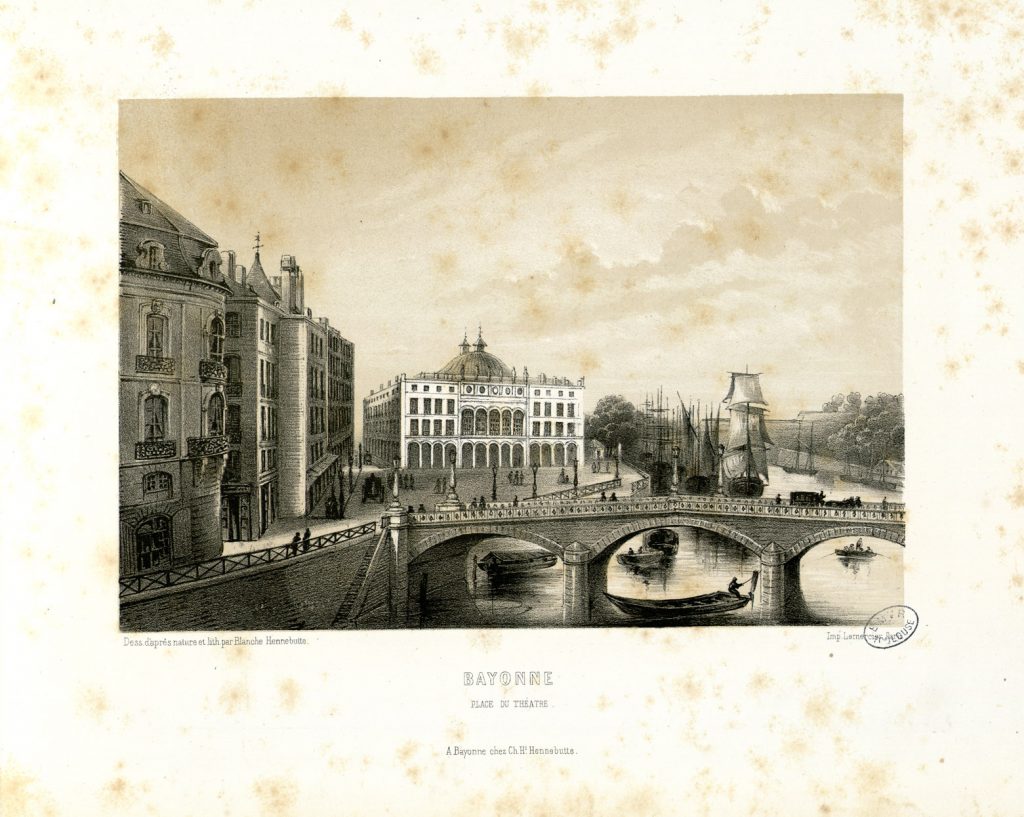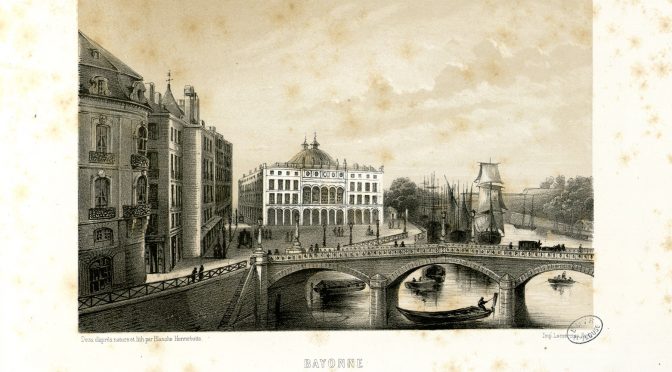Tourism accounts for about 10% of the world’s gross domestic product. We all want to experience new things, see new sites, get to know new people. We want to see something new. And, for many of us, the Basque Country is something new. As of 2014, tourism contributed just about 6% of the Basque Country’s GDP. Clearly, the Basque Country is a hidden gem that is being discovered by more and more people. Efforts to advertise the sites and sounds of the Basque Country began more than one hundred years ago, in Iparralde.

- The first tourist guides dedicated to the Basque Country were published in the early 1850s, with Pays Basque: Le Guide du voyageur de Bayonne à Saint-Sébastien published in 1851 and l’Album des deux frontières in 1852. They were published by Charles Hennebutte. These books, which targeted the aristocratic class, featured illustrations by Charles’ wife Blanche Jeanette Feillet-Hennebutte and her sister Hélène Feillet.
- Blanche and Hélène were the daughters of Pierre Jacques Feillet. The two sisters studied under their father and their maternal grandfather, Pernotin. Becoming accomplished painters and lithograph artists, they moved to Baiona in 1834 where they each began making lithographs of the surrounding areas that were featured in Charles’ books. While their lithographs appeal to the “romantic” sentiments of their readers, the sisters did incorporate a modern perspective of their adopted home when they could.
- Another promoter of the region was one Joseph Augustin Chaho. Born in Atharratze-Sorholüze (Tardets), Zuberoa, Chaho is most famous for creating, in 1845, the myth of Aitor, the legendary patriarch of the Basques. He got the idea from the expression “aitoren (aitonen) semeak” which meant noblemen, but which he took more literally to mean “Aitor’s children,” and became synonymous with the Basques themselves. He was also the leader of the Revolution of 1848 in Baiona.
- Chaho did much to help create a romantic, idyllic view of the Basque Country that guides such as those by Hennebutte sold to tourists. And not all viewed this transformation positively. While before, Basques were often noted for their “seafaring abilities, love of wine, … and angry, arrogant disposition,” the new view promoted, in Julio Caro Baroja‘s view, a “pacific, idyllic creature,” a transformation that folklorist Rodney Gallop blamed on “that monster of inaccuracy Augustin Chaho.”
Primary sources: Aquitaine Online; Patrimoine du Pays Basque.
Discover more from Buber's Basque Page
Subscribe to get the latest posts sent to your email.



Greetings,
How nice!! Tourism in the Basque country is mostly from France and other European countries. I very seldom see American tourists. Cambo les Bains is a cute town build around to what the rest of Europe think about the Basque culture. I go to Cambo because of my niece and her family but personally, I believe that the Spanish side and the other provinces of the Basque country have more character.
Marie Eugenie de Montijo de Guzman, the last Empress of France and wife of Napoleon III left her mark in the tourist industry of the Basque and Bearn provinces.
I remember as a kid when we would go Spain on vacation along the coast–Franco was still alive there were beaches for the Spaniards and beaches for the tourist. For the Spaniards, a beach for the women and children and one for the men. The beach for the tourists, mostly French, was for women and men. The rationale for separating the tourists from Spanish folks was because French women wore bikinis and they would untie the strap of the brassiere as not to have a white stripe on the back. This lack of modesty would offend the wandering eyes of the Spanish men. Oh really???
Monique